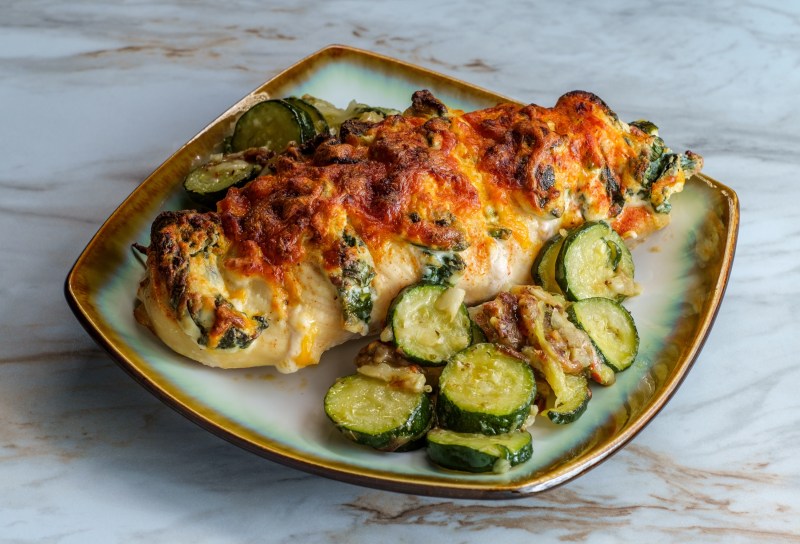
If you are trying to lose weight, you may discover that nutrition is one of the most challenging aspects. What you eat is essential for your health goals, but many foods are high in calories and sugars that don’t support the body.
We have outlined ten different meals that are high in protein and various nutrients that will keep you full while helping you stay in a caloric deficit. These meals are straightforward to make and don’t require many ingredients, making them accessible for most people. Enjoy!
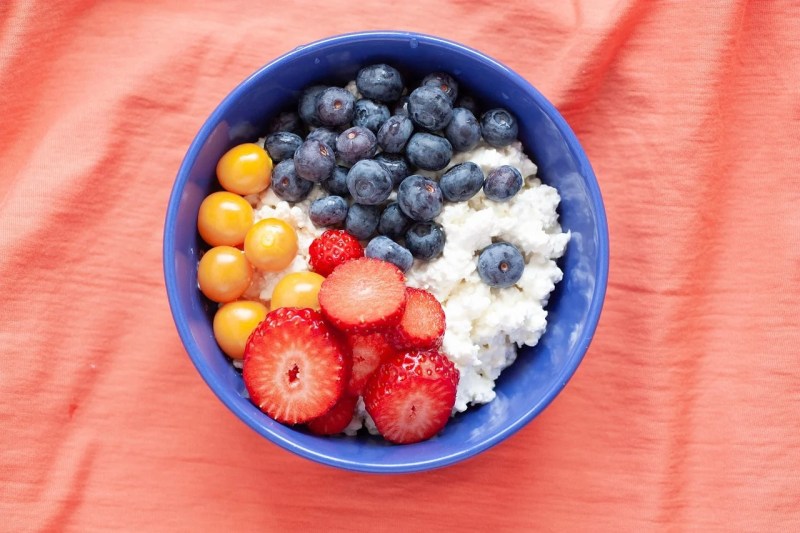
Cottage cheese and berries
Nutrition facts
Calories: 299
Protein: 28g
Fat: 11g
Carbohydrates: 23g
Ingredients
- 1 cup reduced-fat cottage cheese
- ½ cup blueberries
- ½ cup strawberries
- 0.4 ounces sliced almonds
Instructions
- Put the cottage cheese in a bowl.
- Slice the strawberries and add them and the blueberries on top of the cottage cheese.
- Garnish with the sliced almonds.

Scrambled egg whites
Nutrition facts
Calories: 275
Protein: 35g
Fat: 11g
Carbohydrates: 6g
Ingredients
- 184 grams of egg whites
- 1 link chicken sausage
- ¼ of a bell pepper
- 1 cup spinach
- Cooking spray
- Spices
Instructions
- Heat a pan on medium heat and spray with zero-calorie cooking spray.
- Slice the chicken sausage and place it in the pan.
- While the sausage is cooking, chop up the bell pepper and spinach.
- Add the vegetables to the pan and cook until soft.
- Pour the egg whites over the sausage and veggies and add desired spices.
- Cook the scrambled eggs until fluffy, and serve.

Protein oatmeal
Nutrition facts
Calories: 295
Protein: 18g
Fat: 3g
Carbohydrates: 52g
Ingredients
- 40 grams rolled oats
- ½ scoop of Isopure vanilla protein powder
- 1 apple
- Cinnamon
Instructions
- Add your desired amount of water to a saucepan over high heat and bring to a boil.
- Mix in the oats and cook over medium-high heat until the desired consistency is achieved.
- Transfer the cooked oats to a bowl and thoroughly stir in the protein powder.
- Chop up your apple and add it and a desired amount of cinnamon to the oats.

Low-calorie tacos
Nutrition facts
Calories: 287
Protein: 23g
Fat: 10g
Carbohydrates: 27g
Ingredients
- 1 medium-sized flour tortilla
- 3 ounces ground turkey
- 1 cup mixed greens
- 2 tablespoons salsa
- Cooking spray
- Spices
Instructions
- Heat a skillet over medium heat and spray with zero-calorie cooking spray.
- Add the ground turkey and desired spices and cook until slightly browned.
- Add the ground turkey to the tortilla.
- Top with mixed greens and salsa.
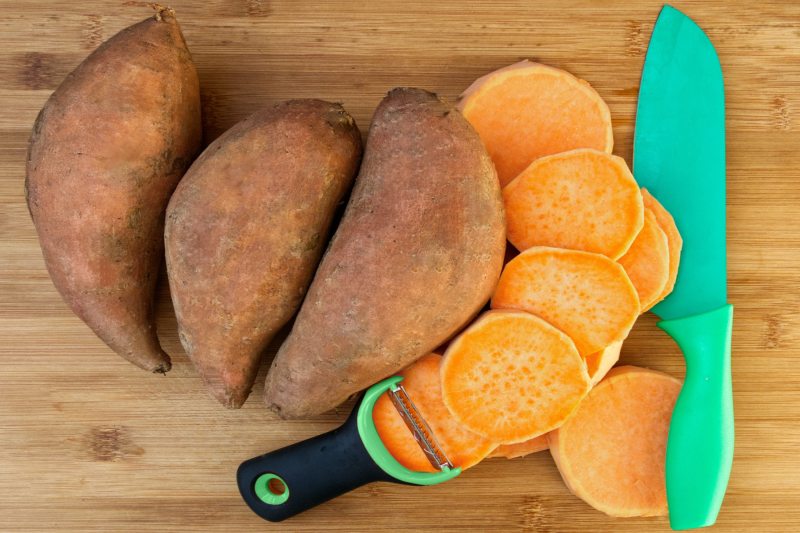
Chicken and sweet potato salad
Nutrition facts
Calories: 274
Protein: 31g
Fat: 4g
Carbohydrates: 33g
Ingredients
- 5 ounces chicken
- 1 cup cubed sweet potato
- 2 cups spinach
- 2 teaspoons honey mustard
- Cooking spray
- Spices
Instructions
- Heat a pan over medium heat, and spray with zero-calorie cooking spray.
- Chop up your chicken, add desired spices, and cook on the pan until slightly browned.
- Remove the chicken from the pan and add the cubed sweet potatoes with the desired spices.
- While the sweet potatoes are cooking, add the spinach and chicken to a bowl.
- Top the salad with the cooked sweet potatoes and honey mustard.

Salmon bowl
Nutrition facts
Calories: 285
Protein: 25g
Fat: 4g
Carbohydrates: 39g
Ingredients
- 4 ounces salmon
- ¾ cup jasmine rice
- ½ cup diced cucumbers
- ¼ cup diced carrots
- 1 tablespoon soy sauce
- Sesame seeds
- Spices
Instructions
- Add desired spices to the salmon and cook in an air fryer, oven, or skillet.
- Bring water to a boil over high heat and pour in the rice.
- Bring the water to a boil again, reduce heat to low, cover, and simmer until the water has been absorbed.
- Add your rice, salmon, cucumbers, and carrots to a bowl.
- Top with soy sauce and sesame seeds.

Ground turkey burger and fries
Nutrition facts
Calories: 296
Protein: 29g
Fat: 16g
Carbohydrates: 10g
Ingredients
- 4 ounces ground turkey
- 1 slice Colby Jack cheese
- 2 lettuce leaves
- 1.5 ounces sweet potato fries
- Mustard
- Cooking spray
- Spices
Instructions
- Cook sweet potato fries per instructions on the bag.
- Add desired spices to ground turkey meat and form into a patty.
- Heat a pan over medium heat, and spay with zero-calorie cooking spray.
- Cook the patty thoroughly until both sides are browned.
- Top burger with a slice of cheese, lettuce, and mustard.
- Serve with the sweet potato fries.
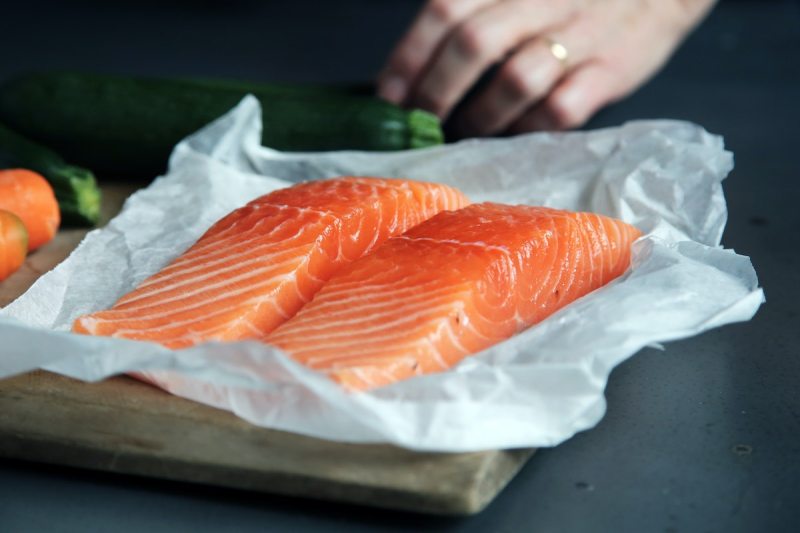
Lemon salmon with yogurt
Nutrition facts
Calories: 289
Protein: 39g
Fat: 6g
Carbohydrates: 23g
Ingredients
- 4 ounces salmon
- ½ cup plain, non-fat Greek yogurt
- ½ cup sliced cucumber
- ½ cup chickpeas
- Lemon juice
- Cilantro
- Spices
Instructions
- Add desired spices to the salmon and cook in an air fryer, oven, or skillet.
- Add Greek yogurt, sliced cucumber, and chickpeas to a bowl.
- Top with the cooked salmon and garnish with a desired amount of lemon juice and chopped cilantro.
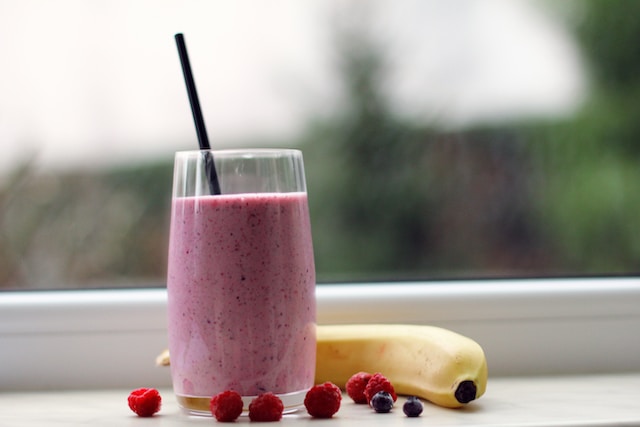
Berry smoothie
Nutrition facts
Calories: 283
Protein: 28g
Fat: 10g
Carbohydrates: 26g
Ingredients
- 1 scoop vanilla Isopure protein powder
- ½ cup almond milk
- ½ banana
- ½ cup frozen mixed berries
- ⅓ avocado
Instructions
- Add all the ingredients to a blender and blend until you have achieved the desired texture.
- Pour the mixture into a glass and enjoy.
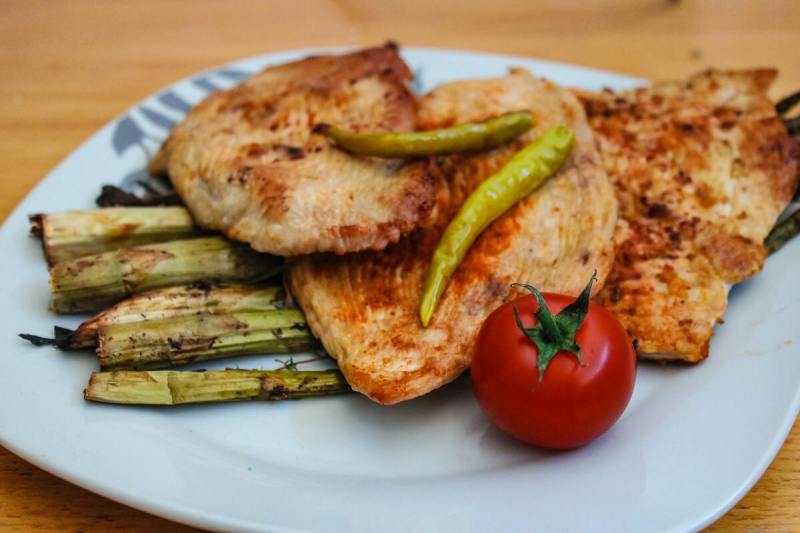
Chicken and veggies
Nutrition facts
Calories: 280
Protein: 39g
Fat: 3g
Carbohydrates: 31g
Ingredients
- 6 ounces chicken
- 10 spears asparagus
- 5.3 ounces golden potatoes
- Cooking spray
- Spices
Instructions
- Chop the potatoes into cubes and add the desired spices. Place them in the oven at 400 degrees Fahrenheit.
- Heat a pan on medium heat, and spray with zero-calorie cooking spray.
- Season chicken as desired and add to the pan.
- Add asparagus to the oven with the potatoes once they are close to being done.
- Remove the chicken from heat once it is cooked through and browned.
- When the potatoes and asparagus are soft, add them to a plate alongside the chicken.
Editors' Recommendations
- Meet the mail-order wagyu beef company prized by Gordon Ramsay and David Chang
- Romaine lettuce, iceberg lettuce, and more: Science says one is actually the healthiest choice
- The best food gifts for an amateur chef: Cookbooks, Caraway cookware, and more
- All-Clad kitchenware, GIR spatulas and more: The best kitchen gifts for anyone who lives at Williams Sonoma
- It’s time to pay attention to Hawaiian rum — why this liquor should be on your bar cart




